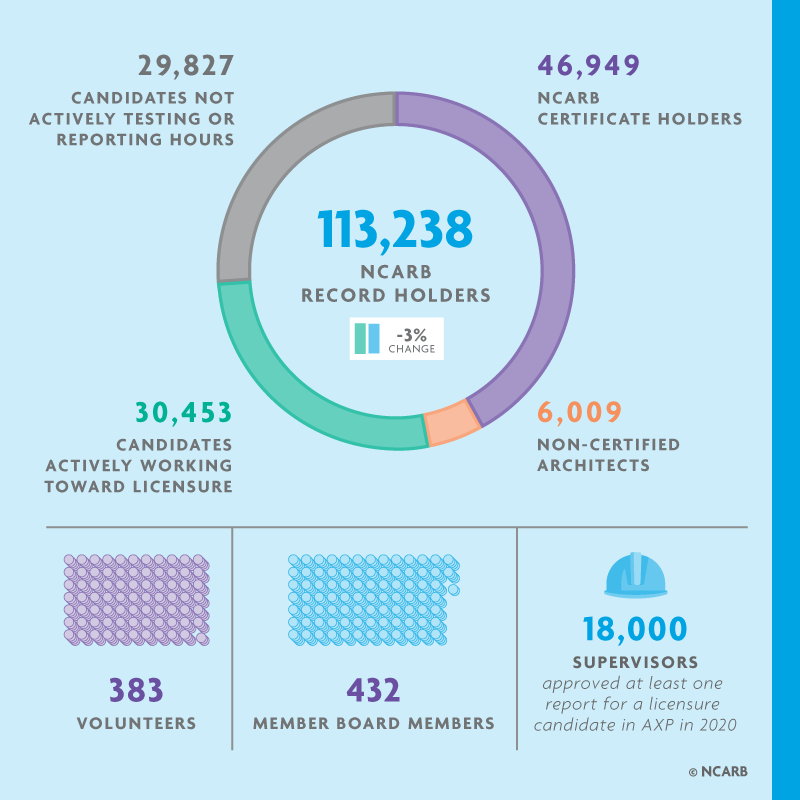With over 113,200 Record holders, more than 400 licensing board members, and over 350 volunteers, NCARB’s community continues to fuel and shape the field of architecture. Despite the challenges that 2020 brought, our volunteers—made up of architects, licensure candidates, educators, and experts from other professions—came together across 27 committees to write exam questions, explore the future of architecture, develop resources for licensing boards, and more.

With 55 architectural licensing boards in the United States, which each have their own rules and requirements, NCARB works to provide board support, encourage program alignment, and assist individuals seeking licensure. Of the 432 members who serve on these boards, 240 are practicing architects, 95 are in related professions (such as engineering and landscape architecture), and 75 ensure the public consumer has a voice on the board.
Nearly 47,000 architects held an active NCARB Certificate in 2020, similar to the previous year.
2020 marks the first lull in growth after a period of steady, yearly increases in the number of Certificate holders since 2014. This is likely due to effects of COVID-19, as architects adapted to the pandemic’s impacts on the profession (See COVID-19’s Impact on Architectural Licensure and Mobility).
The NCARB Certificate simplifies the process of earning additional licenses in U.S. jurisdictions, as well as enables U.S. architects to earn licenses in Australia, Canada, Mexico, and New Zealand. Certified architects have access to free continuing education opportunities through NCARB’s Continuum Education Program.
Around 113,000 individuals held an active NCARB Record in 2020, a 3 percent decrease compared to 2019. Of those Record holders, 41 percent are architects with an NCARB Certificate (a 1 percentage point increase from 2019), and 5 percent are architects without a Certificate (no change from 2019).
The proportion of Record holders actively working toward licensure declined 6 percentage points compared to 2019, now at 27 percent. The remaining 26 percent of individuals are licensure candidates who haven’t taken a division of the ARE or reported AXP hours in the last year (up 4 percentage points since 2019). These changes are likely due to effects from the COVID-19 pandemic, such as the test center closures from March-June 2020, increased unemployment rates, and changes in firms’ day-to-day work (See COVID's Impact on Architectural Licensure and Mobility).
Over 5,500 individuals started an NCARB Record in 2020—33 percent fewer than the number who started a Record in 2019. For reference, the average number of new Record holders per year over the past decade is 8,266.
Candidates create NCARB Records so they can document their professional experience (AXP) and examination requirements (ARE). The drop in Record creations seen in 2020 can likely be attributed to the effects of the COVID-19 pandemic and the resulting test center closures (See Fewer Candidates Start Path to Licensure During the Pandemic).